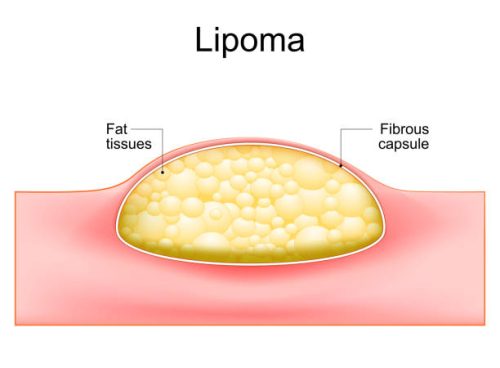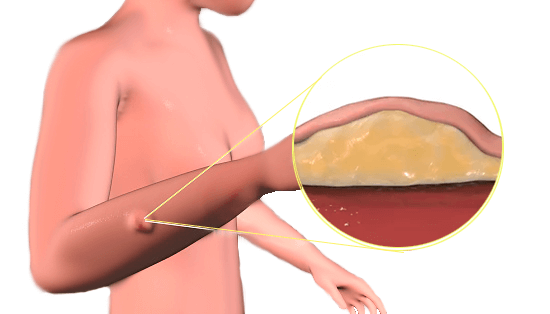What is lipoma surgery? And, even more importantly, why do these little fat lumps appear?
Although lipomas are generally harmless, it is true that their presence can generate unease and a lot of doubts.
To dispel them and provide some peace of mind, we have written this guide that contains everything you need to know about lipomas: causes, symptoms, risks and treatments.
Furthermore, we will see if these tumors represent a real health risk or not.
Are you interested? Continue reading.
Let's talk about lipomas...
A lipoma is a common variant of benign tumor that is made up mainly of adipose tissue. These growths, usually soft to the touch and mobile, appear under the skin.
They are usually characterized by their lack of pain, and frequently arise in regions such as the neck, shoulders, back, abdomen or arms.
From small nodules to more noticeable growths, lipomas can come in a variety of sizes.
Their appearance is, for the most part, harmless, however, this does not mean that they do not have to be evaluated by a health professional.

Symptoms
In many cases, lipomas They can develop silently and go unnoticed. However, some signs that could indicate the presence of a lipoma include:
- Soft, mobile lumps under the skin
Lipomas usually manifest as easily palpable nodules that move with pressure.
- Feeling of pressure or discomfort
In some cases, especially when lipomas grow in size, they can put pressure on surrounding tissues, nerves or blood vessels.
This pressure can cause a feeling of discomfort in the affected area, especially if the lipoma is in an area where pressure is applied, such as when sitting or wearing tight clothing.
- Possible slow growth
You may have a small lump under your skin that gradually increases in size over time.
- Generally painless
In most cases, lipomas do not cause pain, which contributes to their benign and non-invasive nature.
Why lipoma forms
The formation of lipomas continues to be a phenomenon that raises questions in the area of health.
Although the exact cause is not yet fully understood, some variables have been identified that could contribute to its development.
- hereditary factors
If there is a family history of lipomas, it could increase the likelihood of their formation.
- Genetic predisposition
Some people may have a genetic predisposition that makes them more likely to develop lipomas. This implies that certain genes may be involved in its formation.
- Response to injury or trauma
It has been observed that some people develop lipomas after experiencing blows, injuries, or surgeries to a specific region of the body.
Fat cells can accumulate in these areas as part of the healing process, leading to the formation of a lipoma.
Risk factors
While anyone can develop lipomas, there are risk factors that increase your chance of developing them.
- Family history of lipomas.
- Although they can occur at any age, the incidence tends to increase as we age.
- Genetic conditions such as multiple adiposis are associated with an increased risk of developing multiple lipomas.
- Gardner syndrome, people with this condition may experience lipomas and other associated clinical manifestations.
lipoma surgery
Lipoma removal surgery is a commonly considered option when these fatty growths interfere with mobility, cause discomfort, or affect aesthetics.
Among the various lipoma extraction methods, the following stand out:
Lipoma surgery with simple excision
This method involves making an incision over the lipoma to access it and remove it in its entirety. It is an effective technique for lipomas of moderate size.
Lipoma surgery with liposuction method
In some cases, liposuction is used to aspirate fatty tissue from the lipoma using a cannula. This technique is particularly effective for softer lipomas located in specific areas.
Best Lipoma Surgery: Endoscopic Lipomectomy
In this procedure, an endoscope is used to visualize and remove the lipoma through minimal incisions.
This technique is less invasive and can be beneficial in certain cases to reduce the size of the incision and speed recovery.
The choice of method will depend on the size, location and consistency of the lipoma, as well as the surgeon’s and patient’s preferences.
The main goal is to achieve a complete and safe removal of the lipoma, while minimizing possible complications.
Are Lipomas dangerous?
Generally speaking, lipomas are not considered dangerous; They are benign and usually do not turn into cancer.
However, in rare cases, these fatty growths can reach a size that puts pressure on nearby tissues, nerves, or blood vessels, causing significant discomfort and warranting further evaluation or even surgical intervention.
Despite its largely harmless nature, obtaining an accurate diagnosis is essential to rule out potential complications and determine the need for treatment.
Finally, at Innova Cirugía we perform lipoma extraction using various techniques. If you are considering surgery, talk to our experts.




